The Cocos nucifera, aka ‘the Coconut tree’, is one of the most widely-recognized and widespread trees on the planet. While it is definitely a member of the palm family, there are some distinctive differences that make it stick out from the palms that you are used to seeing, and today that’s going to be our focus.
In this article, we’ll tell you about how the Cocos nucifera compares to some of the other most common palms, starting with identification tips, preferred soil and climes, types of fruits that they bear, and more.
Please keep in mind that contrast will be the most important factor here – Coconut palms are only 1 of approximately 2600 species of palm trees – but we’ll try to keep things as general as possible when we talk about features and popular uses of palm trees themselves.
Without further ado, let’s talk about palm trees vs coconut trees – they may look the same, but there’s definitely much more than meets the eye!
Bottom Line Up Front
Unless you live in Hawaii or certain parts of Florida, specifically from the east to west coast in Stuart to Punta Gorda, or in the southern Key West area, you won’t be able to grow coconut trees.
Hawaii is ideal, as it is in the tropics, and the sub-tropical regions of Florida will support them, but elsewhere in the U.S. you simply won’t be able to get them to grow.
The only exceptions are U.S. territories, such as the U.S. Virgin Islands, Puerto Rico, and Guam American Samoa, but otherwise you’ll need to go with a palm that is friendly to your specific location.
Table of Contents
The Palm family

While coconut trees are the most widely-planted palms in the world, they are part of a larger family called Arecaceae, which includes palms that you would recognize as trees but also some climbing varieties and shrubs.
In the United States, you’ll find 14 native palm species:
- Broom palm – Thrinax parviflora
- Cabbage-palm – Sabal palmetto
- Dwarf palmetto – Sabal minor
- Fan Palm – Washingtonia filifera
- Florida cherry palm – Pseudophoenix sargentii
- Florida silver palm – Coccothrinax argentata
- Louisiana palmetto – Sabal louisiana
- Needle palm -Roystonea elata
- Paurotis palm – Paurotis wrightii
- Pursh – Rhapidophyllum hystrix
- Rio Grande palmetto – Sabal texana
- Saw palmetto – Serenoa repens
- Scrub palmetto – Sabal etonia
- Silvertop palmetto – Thrinax macrocarpa
Those native species will be found most commonly in Florida or Hawaii, but are also distributed through the following U.S. states:
- Arizona
- California
- Georgia
- Louisiana
- Nevada
- North and South Carolina
- Texas
Now that you have an idea of the scope, let’s look at some of the main differences between standard varieties of Palm trees and Coconut trees so that we can delve a little deeper into the subject.
The main differences between Palm and Coconut trees
While we normally go with a bulleted list here, as we’re comparing one specific tree with the remaining members of its family, we’ll combine some bullets with the details broken into sections. The key differences between Coconuts and other palms break down to the following:
- Identification
- Ideal growing conditions
- Uses
- Fruits
Identification
The coconut tree can grow to be as tall as 100 feet, with smooth, light-colored bark and the coconuts will be seen in clusters right at the top. The leaves are wide and spread out diagonally, with lengths between 13 and 20 inches, and lanceolate (spear-shaped) leaflets which reach between 24 and 35 inches long.
By contrast, the remaining palm family members come in an assortment of shapes and sizes, from as small as 30 feet to as high as 200! While leaves may differ quite a bit in shape, with most palm family members, these leaves will fan out, and the most common trunk color will be tan.
Some of the palm trees will also produce faux-trunks, so that they appear more as a cluster or trees with a center dominant, rather than a single growing palm tree.
Ideal growing conditions
Coconut trees like humid conditions, along with full sunlight, and temperatures must be consistently warm year-round – they do NOT do well in the cold! Sandy or rocky soil which is also loamy and well-draining is ideal for growing these trees.
Other Arecaceae are more diverse in that they will do well in subtropical regions, such as Florida, as long as they have plenty of sunlight and humidity. Where these differ, however, is the handful of species that are hardy enough to survive in colder climes.
Saw Palmettos and Chinese Windmill palms are good examples of these. While the temperature requirements differ from the Coconut tree, the soil does not – sandy loam is the preferred medium for all palms.
Uses
Coconut trees have quite a lot of usefulness. Coconut milk, the flesh of the fruit, and coconut oils are the most obvious, but they also produce a nice wood for building and woodworking. This same wood is often turned into charcoal, while the fibers are utilized for other things such as coconut coir fertilizer.
Standard palms are utilized for their oils, fibers, wood, and culinary uses, so their lack of coconuts doesn’t really reduce their usefulness very much at all!
Fruits
Coconut trees obviously produce coconuts, but depending on the species of palm, other members of the Arecaceae family can produce peaches, dates, and even acai berries!
Now that we’ve covered key differences, let’s try to break down the data more with some targeted pros and cons on the Coconut tree and popular palms also grown in the United States.
Key Features: Palm trees (Arecaceae family)

The key features of palm tree family break down into the following:
Palms fall into a number of categorical forms, including stemless plants, climbers, shrubs, and tree-like varieties, predominantly with tan colored bark that is predominantly rough, although there are certainly smooth-barked examples among the 2600 remaining species (2599 if we don’t count the Cocos nucifera we’ll be detailing in the next section!)
Palm trees are commonly recognized by their distinctive fronds, which are a compound formation of evergreen leaves that typically arrange at the top of the unbranched stems. These leaves are commonly spear-like in the forms that you recognize the most, although keep in mind that palms are found in a number of locales, from rainforests to deserts, so there is a lot of variation in form.
Flowers tend to be fragrant and either creamy-white or yellow in coloration, and both male and female flowers are commonly found in the same inflorescence on each individual palm.
Appearance will vary – there are palm trees in the ‘standard’ recognized varieties, while some grow with faux trunks clusters, and heights may range from 30 to 200 feet.
Almost all palms prefer loamy soil that is either sandy or rocky.
Pros
With origins in the Caribbean, Indo-Pacific, and South American regions, palms are highly resistant to storms and quite hardy growers.
High usability – Palms are prized for their wood, oils, fibers, and for different fruits, such as dates, acai, and peaches.
These plants have a pronounced aesthetic whether grown singly, or employed in clusters for an ‘oasis ambience’. Some, like areca and parlor palms may even be grown indoors!
Cons
With the exception of a few species, most palms are extremely sensitive to cold. So much so that a single night of it may prove fatal for the plant!
Maintenance levels will vary – indoor varieties are the easiest, but unless you live in Florida or Hawaii, outdoor varieties may require professional assistance to maintain – at least for a goodly amount of time until you adjust to your species specific requirements.
Key Features: Coconut Palm (Cocos nucifera)
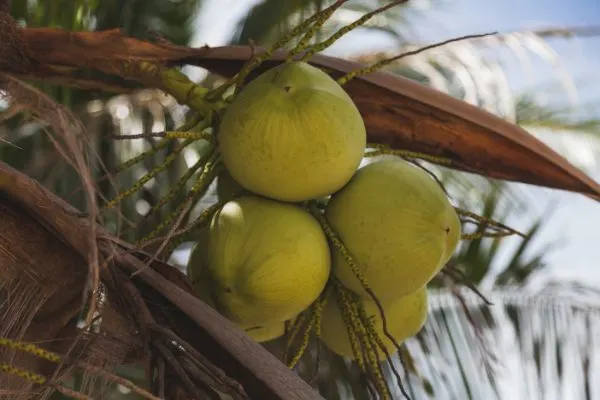
For Cocos nucifera, the key features that you can expect will include the following:
Coconut palms exhibit smooth, light colored bark, with slim trunks that may grow up to 100 feet tall. The leaves are found at the crown of the tree, extending about 20 inches in length, with leaflets that are lanceolate and may be as long as 24-35 inches.
Fruits of the coconut palm are initially green or yellow and rounded in shape, and also found at the crown of the tree.
Both male and female flowers will be present, and they are creamy white or yellow in color, with female flowers being noticeably larger than the males. Both will be present in the same inflorescence.
Pros
Coconuts are a great investment – they’ll live up to 100 years, providing you with exotic aesthetics and as much utility as you’d like. You can make coconut coal, the wood has a number of applications, and of course the fruits provide oils, coconut coir fibers, coconut water, and simply the flesh of the fruit itself. You can even make soaps and other goods that are in high demand.
Coconut trees are quite low maintenance, once they’ve started to grow they tend to be hardy as long as the temperature and sunlight requirements are met.
They interspace well with other crops and trees.
Nothing quite says ‘tropical’ like growing coconut trees – they’re the most popular palm tree grown worldwide!
Cons
Weight equals mass times acceleration, which is vital science that you need to know if you grow coconuts. A 3-pound coconut, falling from a height of 100 feet, hits with about 940 pounds of force. Simply put, you’ve gotta watch out for falling coconuts!
While they are hardy trees, Coconuts have shallow root systems, so very high winds can uproot them.
Fronds can provide access to your roof for local animals, if the trees are too close to your house. The fronds also fall from time to time, so a certain amount of cleanup is to be expected.
Alternatives to Coconut and other palm trees
While palms, especially the coconut, can be picky about their environs, you have a lot of alternatives that can give you that exotic palm look without being so problematical. Let’s take a peek at some popular alternatives to palm trees that you might consider!
Dragon Trees – Asparagaceae family
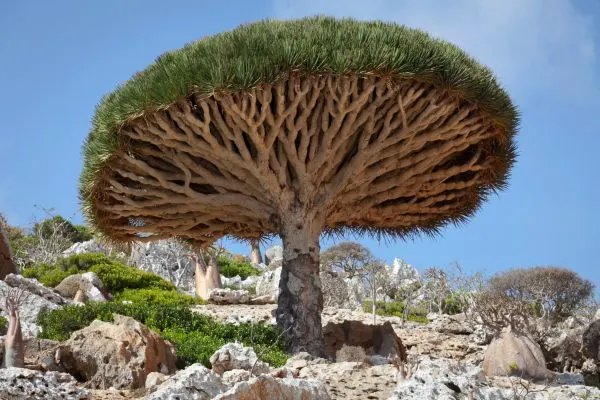
The Dracaena genus of the Asparagaceae family includes a few members that look very much like palm trees. Examples include the Dracaena tree, Striped dracaena, and both the Madagascar and Canary Islands dragon trees.
Best of all, many of these are quite suitable for indoors, requiring very little in the way of sunlight and also having modest water requirements.
Ponytail palm – Beaucarnea Recurvata
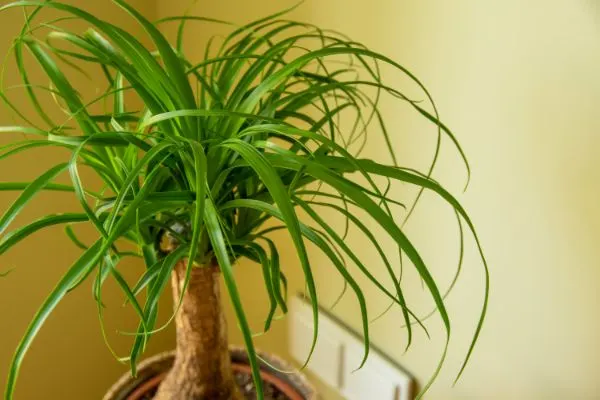
Native to southeastern Mexico, the Ponytail palm is not a member of the palm family, but it definitely has the same sort of look. With a wide, tapered base, tannish bark, and long, spear-like leaves at the crown, it’s a very hardy option that can bring exotic looks to your landscape with much less worry and little maintenance required.
Sago palm – Cycas Revoluta
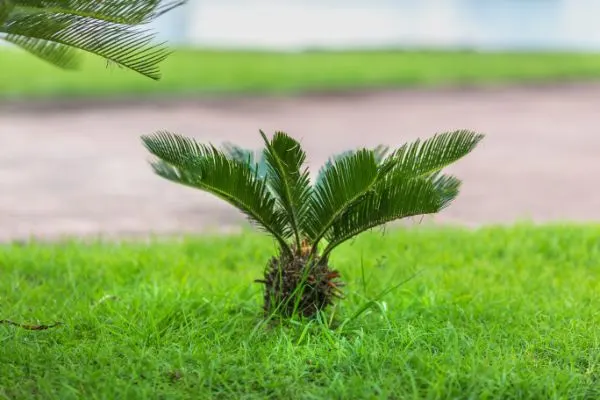
A Japanese shrub, the Sago palm is another not-really-a-palm option that you can choose. While it’s actually a shrub, the wide, fanning leaves of this plant definitely look the part and it can also be grown indoors.
One very neat perk of Sago palms is their longevity – these plants grow slowly, but can live for hundreds of years! That’s not something you see every day, you know?
Traveler’s palm – Ravenala Madagascariensis

The Traveler’s palm is our final faux-palm and it’s quite the attention getter. Looking rather like a short palm tree, with enormous, paddle-shaped leaves spaced high across in a fan-shape, it’s a tree that really brings the look of the tropics wherever you choose to plant it!
Tips to help finalize your decision
Now that you have the facts at your disposal, it’s time to go through some tips to help you to finalize your decision on what palm you might want to plant. Let’s take a look:
If you don’t live in Florida or Hawaii, coconut trees are definitely off of the table. A cold snap could kill one outright, so this will definitely narrow your options down.
If you live somewhere colder, some palms are quite well-suited for this, such as Pindo palm, Needle Palm, European Palm, and the Blue Mediterranean Fan palm.
Alternative trees that have a palm appearance, such as we’ve listed today, are an excellent way to cultivate a little tropical ambience and many varieties may be grown inside – a definite perk you can enjoy every day!
FAQ
Before we conclude this article, in order to be thorough we like to include a little last-minute information to help plug any gaps that we might have missed. To that effect, we’ve collected some frequently asked questions regarding coconuts and other species of palm trees that we think you will find most useful!
How do you take care of a coconut palm tree?

Coconut trees are fairly easy to care for, as their sub tropical environs help to provide humidity and do most of the work. That said, the soil should ideally be moist at all times, but not overly so. The best way to do this is to saturate it with warm water on a frequency of once or twice a week.
Just check the topsoil from time to time to make sure it hasn’t dried out and you should be okay.
Are coconut palms hard to take care of?
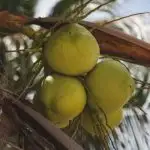
No, not really – the hardest part in raising coconuts is the maintenance that you’ll need to do over time. This includes harvesting the coconuts and dealing with fallen fronds, but the actual care of the tree itself beyond this is really a piece of cake!
How long does it take for a palm tree to get coconuts?
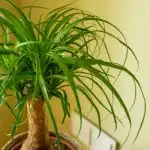
Coconuts start growing on your tree within 6 to 10 years, but it may take 15 to 20 years before they reach their full production potential. You’ll need to be patient, but once you get there then prepare to be impressed!
What is the best palm tree for Texas weather?

Your best bet would likely be the Windmill palm. This plant can withstand sudden variations in heat and cold and is quite adaptable to a wide variety of climates – not just Texas. If you’re looking for a hardy palm, the Windmill is definitely one of the toughest.
Should I cut off dead palm leaves?

While they will eventually fall off on their own, you can prune the palm fronds yourself once they are completely brown. Just be sure that there are no green spots left at all and if that’s the case, then your handy pruning saw or hand pruner should be perfectly fine to use to speed things up.
How do I protect my palm tree from freezing?

Mulching is your best defence against the cold, so when you see that the weather is about to take a turn, then it’s time to fortify your tree. Ideally, a 3 to 4-inch layer of mulch should be just about perfect for protecting the roots from a freeze.
In Conclusion
Today we’ve compared the Coconut palm tree to the other members of its family and while it’s the most famous, it’s also much more selective than most of the rest. Coconut trees will only grow in Hawaii or Florida if you’re in the United States, as well as a handful of U.S. territories.
It requires a tropical or subtropical environment, as it’s very sensitive to the cold. That said, there are plenty of palms that are adapted to colder climes and will do just fine. Windmill palms, for instance, are a hardy example that can grow in Texas, while a number of alternatives like the Dragon tree or the Sago palm may even be grown inside!
So, if you’re looking for that exotic, tropical look, then you’ve definitely got options – but if you do happen to live in Florida or Hawaii, you’d be missing out if you didn’t give Coconut trees a try!
More tree stuff
